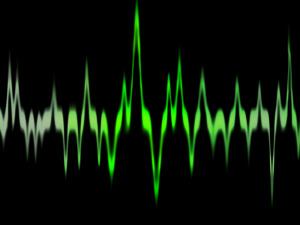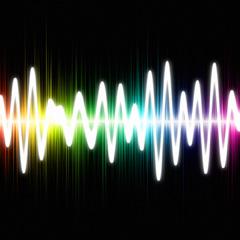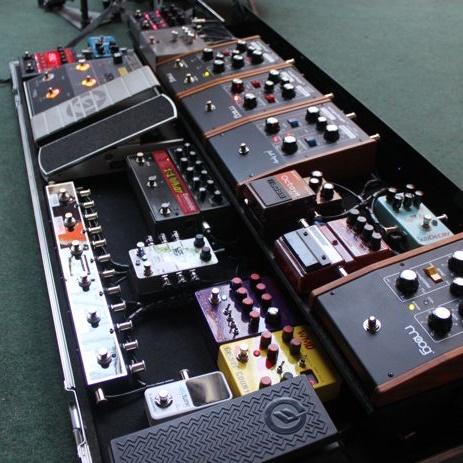Language
tips
-
EQ Frequency Range Tips
[caption id="attachment_2136" align="alignright" width="300"] ProAudioLand has got you covered with a few tips on when and where to apply EQ![/caption]
If you’re going to get into recording, you’re going to have to know your EQ – there’s just no way around it. Worse yet, there’s no real hard and fast rules when it comes to proper EQing. Much like writing music itself, EQing has to be felt out by ear to hear what sounds best along with a healthy dose of trial and error. It’s a game of observation and tweaking. But it’s not all bad; there are certainly a few general guidelines that will send you towards the right direction. So, if you don’t know your 50Hz from your 500, read on because ProAudioLand has got you covered with a few tips on when and where to apply EQ!
Starting with the lowest common frequency, the 50Hz-60Hz range, this is where your bass gets that deep rumble. Need some thickness on that kick drum? Want a bass line that your audience will literally feel beneath their feet? It all resides in this range. Essentially, you’ll want to boost the 50Hz-60Hz range in order to thicken up deep bass and bass drum parts. Conversely, you also want to make sure that your vocals do not hit anywhere near this frequency as this is usually a sign of those unwanted microphone pops. Continue reading →
ProAudioLand has got you covered with a few tips on when and where to apply EQ![/caption]
If you’re going to get into recording, you’re going to have to know your EQ – there’s just no way around it. Worse yet, there’s no real hard and fast rules when it comes to proper EQing. Much like writing music itself, EQing has to be felt out by ear to hear what sounds best along with a healthy dose of trial and error. It’s a game of observation and tweaking. But it’s not all bad; there are certainly a few general guidelines that will send you towards the right direction. So, if you don’t know your 50Hz from your 500, read on because ProAudioLand has got you covered with a few tips on when and where to apply EQ!
Starting with the lowest common frequency, the 50Hz-60Hz range, this is where your bass gets that deep rumble. Need some thickness on that kick drum? Want a bass line that your audience will literally feel beneath their feet? It all resides in this range. Essentially, you’ll want to boost the 50Hz-60Hz range in order to thicken up deep bass and bass drum parts. Conversely, you also want to make sure that your vocals do not hit anywhere near this frequency as this is usually a sign of those unwanted microphone pops. Continue reading → -
Introduction to Common Song Structure
[caption id="" align="alignnone" width="320"] Song structure, otherwise known as musical forms of songs in popular music, are typically sectional, repeating forms, such as the popular twelve bar blues.[/caption]
One of the golden rules of songwriting is that – like most other forms of art – there aren’t really any. But with that said, it’s never a bad idea to take a page from successful ideas, and this is most definitely true when it comes to budding songwriters trying to find their groove.
Song structure, otherwise known as musical forms of songs in popular music, are typically sectional, repeating forms, such as the popular twelve bar blues. Other common forms include thirty-two-bar form, verse-chorus form, and strophic form. Popular music songs are rarely composed using different music for each stanza of the lyrics (songs composed in this fashion are said to be "through-composed"). This form can be used in any structural difference in melodies. A common format would be as listed: Verse, Pre-Chorus, Chorus, Verse, Pre-Chorus, Chorus, Bridge, Verse, Chorus, Middle Eight. Continue reading →
Song structure, otherwise known as musical forms of songs in popular music, are typically sectional, repeating forms, such as the popular twelve bar blues.[/caption]
One of the golden rules of songwriting is that – like most other forms of art – there aren’t really any. But with that said, it’s never a bad idea to take a page from successful ideas, and this is most definitely true when it comes to budding songwriters trying to find their groove.
Song structure, otherwise known as musical forms of songs in popular music, are typically sectional, repeating forms, such as the popular twelve bar blues. Other common forms include thirty-two-bar form, verse-chorus form, and strophic form. Popular music songs are rarely composed using different music for each stanza of the lyrics (songs composed in this fashion are said to be "through-composed"). This form can be used in any structural difference in melodies. A common format would be as listed: Verse, Pre-Chorus, Chorus, Verse, Pre-Chorus, Chorus, Bridge, Verse, Chorus, Middle Eight. Continue reading → -
Guitar Weight and Tone
 There’s a lot that goes into a guitar’s signature tone. There’s the pickups – of course – as well as the makeup of the wood, not to mention the type of body. But beyond that, the weight of the instrument also plays an integral role. And just as there are those who swear by either single coils or humbuckers, there too is a debate over what sounds better – a lighter guitar or a heavier one. The general consensus among guitarists says that a lighter instrument will resonate better in response to the full spectrum of string vibrations and thereby yield a more musical sound, consisting of brighter highs and a more “open” tone. On the other hand, heavier guitars are generally praised for their richer, fuller sound which is due to the relatively massive size of the wood used to anchor the pickups, strings and in a way, the tone itself. Continue reading →
There’s a lot that goes into a guitar’s signature tone. There’s the pickups – of course – as well as the makeup of the wood, not to mention the type of body. But beyond that, the weight of the instrument also plays an integral role. And just as there are those who swear by either single coils or humbuckers, there too is a debate over what sounds better – a lighter guitar or a heavier one. The general consensus among guitarists says that a lighter instrument will resonate better in response to the full spectrum of string vibrations and thereby yield a more musical sound, consisting of brighter highs and a more “open” tone. On the other hand, heavier guitars are generally praised for their richer, fuller sound which is due to the relatively massive size of the wood used to anchor the pickups, strings and in a way, the tone itself. Continue reading → -
Tech Tips: Effects Pedal Signal Chain
[caption id="attachment_1439" align="alignright" width="215"] Mad Professor Ruby Red Booster Effects Pedal[/caption]
An effects pedal signal chain is simply the order in which a series of pedals are connected. If you have ever seen a player use a pedal board, the order of his pedals make up his signal chain. And if by some chance you thought that you can simply place these pedals in any sort of order and still get the same results – think again! Even if you’re just working with two pedals, you will get a different sound depending on the order.
Let’s suppose we are using two very common effects pedals – a wah-wah and distortion. Distortion followed by wah will give you an overstated, thick, duck-like quacking sound while placing the wah before the distortion will give you a much more subtle (more importantly, musical) tone. Now, for most players, deciding what should go where on a signal chain simply came through trial and error along with a good dose of common knowledge. And while a player’s signal chain should be his or her own, those of you out there new to creating a solid signal chain can benefit from some of the general 'rule of thumb' type of advice that can get you started in the right direction. First of all, a good way to begin figuring out the best possible setup for creating an effects chain is by understanding the relationship between a guitar’s signal, the way effects are applied, and the amp that will decipher the sound. Continue reading →
Mad Professor Ruby Red Booster Effects Pedal[/caption]
An effects pedal signal chain is simply the order in which a series of pedals are connected. If you have ever seen a player use a pedal board, the order of his pedals make up his signal chain. And if by some chance you thought that you can simply place these pedals in any sort of order and still get the same results – think again! Even if you’re just working with two pedals, you will get a different sound depending on the order.
Let’s suppose we are using two very common effects pedals – a wah-wah and distortion. Distortion followed by wah will give you an overstated, thick, duck-like quacking sound while placing the wah before the distortion will give you a much more subtle (more importantly, musical) tone. Now, for most players, deciding what should go where on a signal chain simply came through trial and error along with a good dose of common knowledge. And while a player’s signal chain should be his or her own, those of you out there new to creating a solid signal chain can benefit from some of the general 'rule of thumb' type of advice that can get you started in the right direction. First of all, a good way to begin figuring out the best possible setup for creating an effects chain is by understanding the relationship between a guitar’s signal, the way effects are applied, and the amp that will decipher the sound. Continue reading → -
Tone Talk: Factors that Determine the Sound of an Acoustic Guitar
Fender CD-100CE L/H Acoustic Electric You know, every once in a while I find myself at a local music shop just killing some time and for some reason, I always end up going towards the acoustic guitar room. And being the avid tech guy that I am – along with all things music in general of course – I also...


